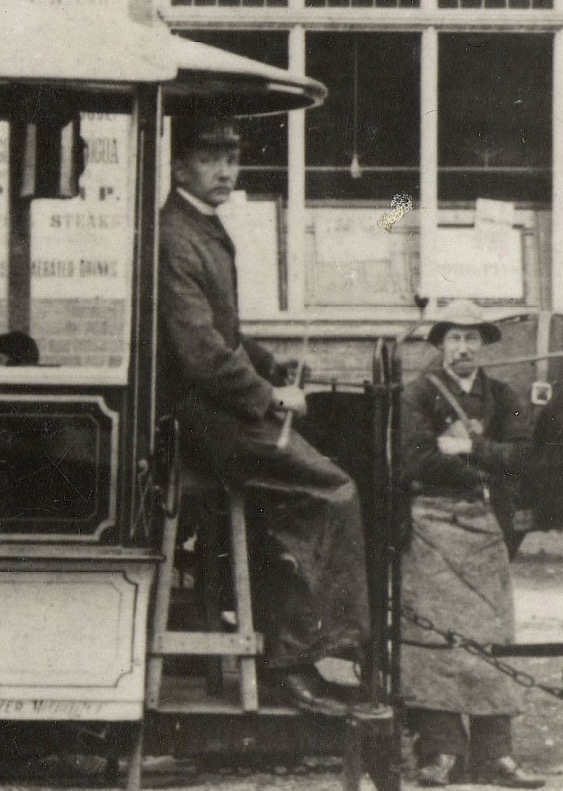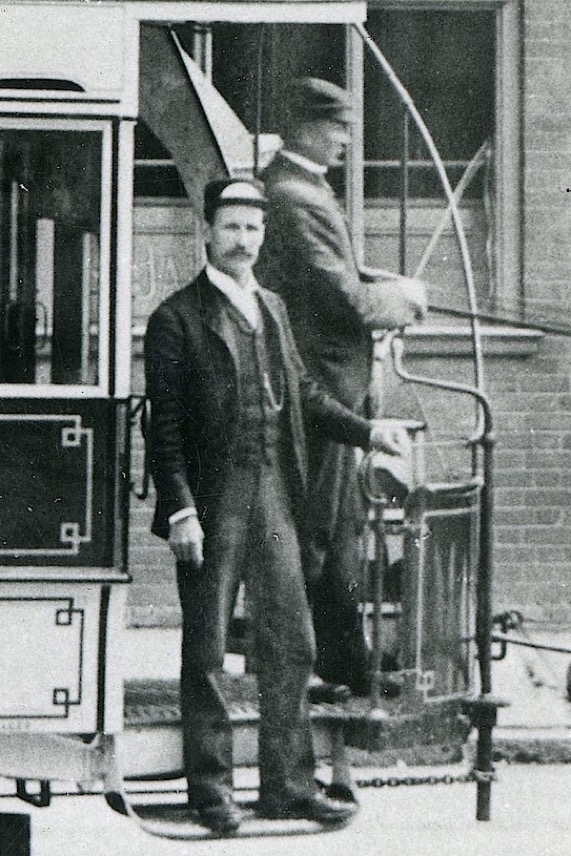Northampton Street Tramways
History
Northampton's 3ft 6ins-gauge horse tramway, which was owned by the Northampton Street Tramways Company, opened for business on the 4th June 1881.
The NSTCo was formed on the 9th January 1880, and acquired powers to build the tramway later that year, construction starting in March 1881; further extensions were authorised in 1882 and a decade later in 1892.
Operation of the new tramway was leased to the builder — J F Meston — who paid the shareholders 6% per annum for the privilege. The lease ran for a period of 12 months from completion of the initial system, which after an extension was built, was deemed to start on the 2nd January 1883; on expiry of the lease, the company decided to work the system itself, taking over on the 2nd January 1884.
Relations between the NSTCo and Northampton Borough Council were initially good, both parties collaborating to ensure the town got the tramway it desired; the council or members of it, also had a stake in the company, the Mayor (between 1880 and 1881) being Vice-Chairman. However, by the time Meston's left the scene, the relationship with local shareholders had become strained, not only were there no local directors on the board, but the company was unable to pay a dividend (in 1884 and 1885), purportedly due to the Kingsthorpe line, which was operating at a loss. Matters came to a head in August 1885, with accusations of mismanagement and financial impropriety, all of which resulted in a new regime, controlled in large measure by local worthies. Cost-saving measures were quickly introduced, new one-horse cars were purchased, and various other improvements made, all of which combined to bring the concern onto an even keel, though it wasn't to be until early 1888 that a dividend could finally be paid.
The system reached it maximum size of 5.25 miles on the 18th May 1893, with the opening of an extension to Abington Park. The tramway comprised four lines, running from in from All Saints Parish Church (Mercers Row and the Drapery): westwards along Gold St, over West Bridge, then northwestwards along St James Rd and Weedon Rd to Franklin Gardens; northwards along Sheep St, Barrack Rd and Kingsthorpe Rd to Kingsthorpe; and eastwards along Abington St to Abington Square, where the line split, the original line running northeastwards along Kettering Rd to Kingsley Park (the Kingsley Park Hotel), and the last line to be built running eastwards along Wellingborough Rd to Abington Park.
The company continued operating profitably throughout the 1890s, expanding into omnibus operation in 1894. Although it expressed an interest (in 1898) in electrifying the system, it certainly did not have the financial wherewithal to do this, so it was probably just sounding the council out in order to see what its position would be in this regard, especially as a new council had been elected the previous year on a municipalisation agenda. Negotiations proceeded slowly, with the corporation's final offer being rejected in 1900, only for the company to return to the table in 1901 seeking to accept the offer, after suffering a serious and costly fatal accident. There is a sense that this may have been more in hope than in expectation, but their luck was in and the corporation agreed. Meanwhile, the latter had obtained powers — on April 22nd 1901 — to construct and operate an overhead electric tramway system.
The company operated the tramway until the 20th October 1901, after which the corporation took over, operating them for nearly three years. The first corporation electric services commenced on the 21st July 1904, with the last horse service running one month later on the 19th August.
Uniforms
Despite its longevity, just over 20 years from the first service to the corporation take-over, photographs of Northampton Street Tramways Company staff are relatively uncommon. The first photo below was taken in the mid 1880s, and clearly shows the crew wearing informal attire, inclusive of headgear. The other two photographs were taken approximately a decade later in the mid 1890s, with both crews wearing informal attire and flat caps. No badges or licences are in evidence.
At the time the horse tramway was taken over by the corporation — 21st October 1901— the company employed the services of 2 inspectors, 18 drivers and 18 conductors.
A single photograph has survived which would appear to show an inspector. This shows a man wearing a kepi-style cap with a large metal cap badge, oblong in form, with a semi-circular upper part, whereas no other photos, including this one, show drivers or conductors wearing such a prominent cap badge.
Further reading
For a history of the enterprise, see: 'Northampton Horse Tramways' by A W Brotchie, in the Tramway Review, Nos 81 (p4-13) and 82 (p48-60); Light Railway Transport League (1975).
Images
Horse tram drivers and conductors
NSTCo Horsecar No 3 outside the St James Cafe. The photograph can be dated reasonably accurately to around 1886/7, as No 3 was rebuilt into single-deck form in 1886, and bears the manager's name — 'Thomas Boyce Goodyer' — an individual who held that position from 1885-87. Author's Collection.
A blow-up of the above photo showing the driver, in smart jacket and with his legs protected by what would appear to be a blanket or apron. It is difficult to be sure whether he is wearing a uniform cap or not, though this seems highly unlikely, given that no other UK horse tramway operator is known to have issued caps to drivers only.
Another blow-up of the above photo, this time showing the conductor. He is wearing a squat bowler-type hat with upturned brim, typical of the 1880s.
Horsecar No 15 at the St James terminus — photo taken in 1893 when this vehicle was new; indeed, it was probably taken to mark its acquisition.
A blow-up of the above photo showing two figures on the horsecar's platform, both of whom appear to be wearing informal attire. The driver — whip in hand — looks to be wearing a flat cap; the other figure is wearing a kepi-style cap with a prominent cap badge — it seems reasonable to assume that he an inspector.
Another blow-up of the above photo, this time showing the youthful-looking conductor (on the platform), who is wearing informal attire with a flat cap. The man in the foreground is probably a policeman.
Horsecar No 22, captured for posterity at the Abington terminus when the vehicle was new in 1895. The shot was taken by the London and Provincial Photographic Company, who had their premises near the terminus, at 237 Wellingboro' Road.
A blow-up of the above photo showing the driver, in unmarked overcoat and wearing a flat cap.
Another blow-up of the above photo, this time showing the conductor; although his flat cap appears to bear something reflective, the quality is so poor that it would be unwise to place any reliance on it, especially as the other photos show no sign of a cap badge.